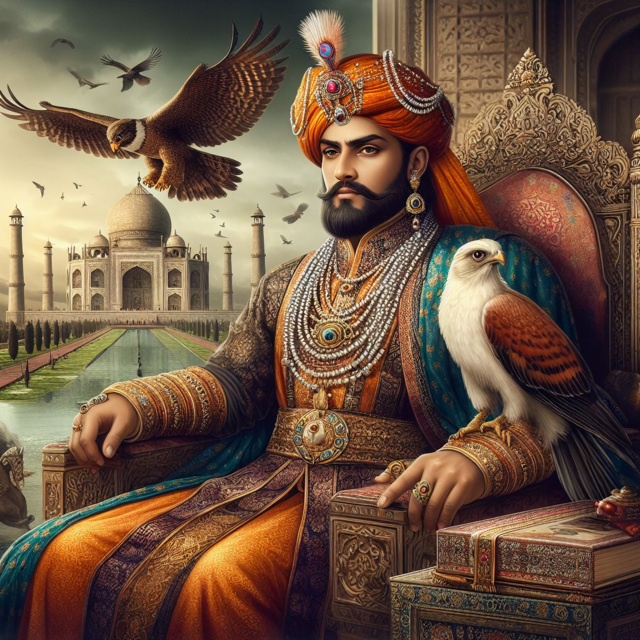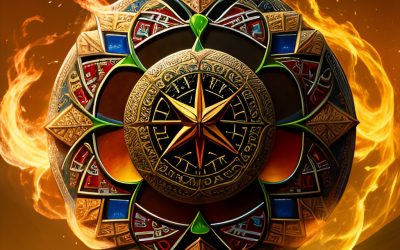Life and Legacy of Jahangir of the Mughal Empire.
Jahangir ruled over one of the largest empires in human history during his lifetime, yet few people outside of South Asia have heard of him. I aim to shed light on the life and legacy of this remarkable figure, exploring his achievements and contributions to both Indian and global civilization.
Born in 1569, Jahangir ascended to the throne after the sudden demise of his father, Akbar the Great, in 1605. He passed away in 1627 due to ill health. Despite inheriting a vast kingdom stretching across much of modern-day Pakistan, Afghanistan, and parts of Central Asia, Jahangir faced numerous challenges early in his reign. Rebellions broke out in various regions, including the powerful Rajput state of Mewar, which resisted Mughal control for several decades. However, Jahangir proved himself a capable ruler, quelling uprisings and expanding the boundaries of the empire through strategic conquests.
Jahangir’s Accomplishments
One of Jahangir’s greatest legacies lies in his patronage of art and literature. During his reign, the Mughal court became a hub of cultural activity, attracting artists, poets, musicians, and scholars from diverse backgrounds. Under his guidance, the imperial workshop produced exquisite paintings, manuscripts, and objects showcasing a fusion of Persian, Indian, and European influences. Many of these works are now housed in museum collections around the globe, testifying to the richness of Mughal artistry.
Jahangir was also fluent in multiple languages, including Persian, Turkish, Arabic, and Hindavi (early form of Hindi), allowing him to communicate effectively with his subjects and diplomatic envoys from distant lands. This linguistic proficiency enabled him to engage with different cultures and ideas, further enriching the intellectual environment of his court.
Jahangir married four times throughout his life, but the most notable among hi s wives was Nur Jahan, who served as his chief consort and advisor for many years. She hailed from a Persian noble family and brought her own talents as a poet, musician, and designer to the Mughal court. Her influence on Jahangir extended beyond their private lives, as she actively participated in political affairs and even held independent authority as a regent when her husband fell gravely ill. Their relationship exemplifies the importance of strong female figures in Mughal society, particularly those who could navigate complex power dynamics and contribute meaningfully to public life.
Jahangir’s Prominence
Despite his many accomplishments, Jahangir has remained relatively obscure compared to other historical figures like Akbar or Shah Jahan, who built the iconic Taj Mahal. One reason for this relative neglect might lie in the fact that Jahangir did not construct any grand architectural monuments during his rule. Instead, he focused on strengthening existing structures and infrastructure, ensuring efficient governance and economic prosperity within his territories. Such pragmatic efforts do not always receive the same level of attention as flashier projects, but they were crucial to maintaining the stability and growth of the Mughal Empire.
Another factor contributing to Jahangir’s lack of recognition might stem from Western historiography, which often privileges certain narratives and perspectives over others. In particular, the colonial era saw the emergence of Orientalist discourses that portrayed Muslim rulers as despotic tyrants, undermining their positive qualities and achievements. Although scholarship has since evolved to challenge these biases, residual effects still linger, making it harder for individuals like Jahangir to gain proper recognition.
To appreciate the true significance of Jahangir, we must consider the totality of his actions and impact rather than fixating solely on specific events or traits. He excelled as a military leader, statesman, patron of the arts, and champion of religious tolerance. His memoir, the “Tuzk-e-Jahangiri,” offers valuable insights into his personality, interests, and decision-making processes, providing an intimate glimpse into the mind of a great monarch. By embracing diversity and fostering creativity at his court, Jahangir created a dynamic environment conducive to innovation and cross-cultural dialogue. These values remain relevant today, serving as a reminder of the potential benefits of inclusive societies that celebrate difference.
Conclusion
In conclusion, Jahangir represents a fascinating blend of tradition and transformation, reflecting the complexities of Mughal India while pointing towards its enduring contribution s to world culture. As we commemorate the 400th anniversary of his passing, let us remember the legacy of this extraordinary emperor and strive to learn from his example. May his memory inspire future generations to build more harmonious, just, and beautiful societies, drawing upon the rich tapestry of human experience.
References
– Bamber Gascoigne. “The Great Moghuls.” HarperCollins Publishers Limited, 2002.
– John F. Richards. “The Mughal Empire.” The New Cambridge History of India, Volume IV, Part V. Cambridge University Press, 1996.
– Muzaffar Alam and Sanjay Subrahmanyam. “Indo-Persian Travels in the Age of Discoveries, 1500–1800.” Harvard University Press, 2007.
– Ruby Lal. “Empress: The Astonishing Reign of Nur Jahan.” W.W. Norton & Company, 2018.
Tags
Divi Meetup 2019, San Francisco
Related Articles
The Plague Doctor’s Diary
A Personal Account of the Turin Epidemic of 1656. I am writing this diary to record my experiences and observations as a plague doctor in Turin, the capital of the Duchy of Savoy, during the terrible epidemic that has afflicted this city and its surroundings since the...
The Timeless Beauty of Bustan
Unveiling the Secrets of Saadi Shirazi's Masterpiece.In the realm of Persian literature, few works have captured the essence of love, spirituality, and morality quite like Bustan (The Orchard) by Saadi Shirazi. This 13th-century masterpiece has left a lasting impact...
The Shifting Sands of Faith
Paganism and Christianity in the 8th Century Bulgarian Empire. Under the vast, star-dappled sky of the 8th century Bulgarian Empire, the wind whispered tales of clashing deities and murmured prayers to a singular God. In this crucible of faiths, paganism, rooted deep...
Stay Up to Date With The Latest News & Updates
Explore
Browse your topics of interest using our keyword list.
Join Our Newsletter
Sign-up to get an overview of our recent articles handpicked by our editors.
Follow Us
Follow our social media accounts to get instant notifications about our newly published articles.










